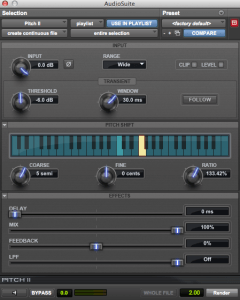Evaluation
This project has been an interesting and fulfilling experience. When first giving the task of providing a soundtrack for the animation Time Capsule, I needed to figure out what the narrative of the feature was and how sound could provide it. I set out both the outcomes of the project as a whole and my own personal learning outcomes that I wanted to focus on specifically. My personal Learning Outcomes were:
- To further my knowledge in field recording
- To further my creativity with SFX design
- How to apply SFX effectively and when to use them
- Improve my creative skills for sound design for characters
My knowledge in field recording has increased with extensive research in microphone placements and how an environment enhances the audiences auditory experience in cinema. As I was to provide a unique rainforest style track, I unfortunately couldn’t go out and record my own as there isn’t any rainforest in Lincolnshire or the UK for that matter. But, with the knowledge learnt with research, I could still create a unique and diverse landscape. By layering and manipulating animal sounds on top of a master rainforest track, provided a diverse soundscape, giving Time Capsule a unique planet ambiance. SFX design was a massive part in the animation and also my learning outcomes. By recording, creating and sourcing SFX has given Time Capsule’s soundscape life. My skills in manipulating audio ha increased tremendously, by manipulating each sound recorded and sourced, has given me the confidence and skills in sound design. Recording everyday objects and giving them a platform to be heard within the feature, I believe gives Time Capsule a unique world for the audience and the manipulation of audio adds to this. By applying my research in recording SFX, produced what I believe to be high quality pieces of audio and by using the audio in the feature, I have successfully achieved my learning outcome. I have achieved the leaning outcome of character design in three ways. The first being recording an actual animal to give a sense of realism to the character. The second way of using my vocals and manipulating them in a way they sound creature and alien like. The third and last way was recording foley for the character movements and providing claw like sounds for the character. Doing this, has given the character a presence sonically in the feature, making him more relatable to the audience. By sticking to the benchmarks provided by the animation team and creating benchmarks of my own, made sure I stuck to right sound that both the animation team and myself wanted. Each benchmark described in this blog has been stuck too by myself as it provided me with a goal to achieve sonically.
The problems that presented itself throughout this project was the lack of communication between me and the animation team. I believe that by establishing a weekly meeting to show our work would have been a good idea, as it would of shown where we were at it in terms of work and what elements of our work needed to be improved. Instead, we had very few meeting throughout this process and we left each other to get in with our own work. So, I believe more communication was needed. However, to combat this, we each provided work to our shared google drive folder, which was kept up to date on a frequent basis.
If I were to approach this project knowing what I know now, I would have recording more of my own sound effects, to the point where 90% of the sound effects heard were mine. I would have recorded more animals for the planet ambience because as much as I have learnt with recording animals such as my dog, I believe that I could have had more diversity with different creatures that I had recording in the planet ambience, adding more to my personal learning outcome.
Overall I believe this project has been a success. I have achieved my learning outcomes through extensive research and then applied it to the production of the animation. By providing a unique ambient track, it will give the audience a new experience of the world in Time Capsule. I have recorded and sourced SFX that could then be applied to the animation, providing depth to the narrative. By creating a funny and interesting character sonically, has given an animated character that the audience can understand and relate to.


